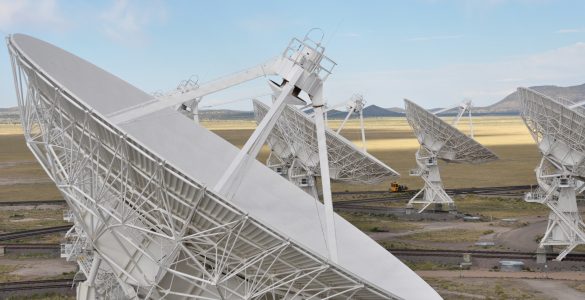Latest NRAO News
News is managed by NRAO News & Public Information. Questions about News? Have a story to share? Want to interview a scientist or create new media about our telescopes?

New studies using the VLA and other telescopes have added to our knowledge of what happens when a black hole shreds a star, but also have raised new questions that astronomers must tackle.

When the Very Large Array was completed forty years ago, it was a different kind of radio telescope. Rather…

Comparing data from VLA sky surveys made some two decades apart revealed that the black hole-powered “engines” at the cores of some distant galaxies have launched new, superfast jets of material during the interval between the surveys.

New VLA images show how the crowded environment of a cluster of galaxies affects the individual galaxies, helping astronomers better understand some of the complex details of such an environment.

Join our host Melissa Hoffman as she talks about the history of the VLA and some of the remarkable objects it has discovered!

Winners in NRAO’s VLA 40th Anniversary Image Contest are from around the world, and their works illustrate a fascinating variety of celestial objects. Entries combined observational data from the VLA with data from optical, infrared, and X-ray telescopes, and from computer simulations.

The Very Large Array (VLA) turns 40 years old on October 10, and the National Radio Astronomy Observatory is hosting a day-long virtual celebration that day.

Socorro, New Mexico, has a written history going back more than 400 years. The National Radio Astronomy Observatory’s Very Large Array (VLA) radio telescope is well known to professional and amateur astronomers around the world. However, millions of people undoubtedly first heard of Socorro and the VLA when Warner Brothers released the movie Contact in July of 1997.

To help celebrate the VLA’s 40th anniversary, the National Radio Astronomy is conducting an image contest, and offering cash prizes for visually compelling works that incorporate radio observational data from the VLA.

A new image from the VLA dramatically reveals the extended magnetic field of a spiral galaxy seen edge-on from Earth.





